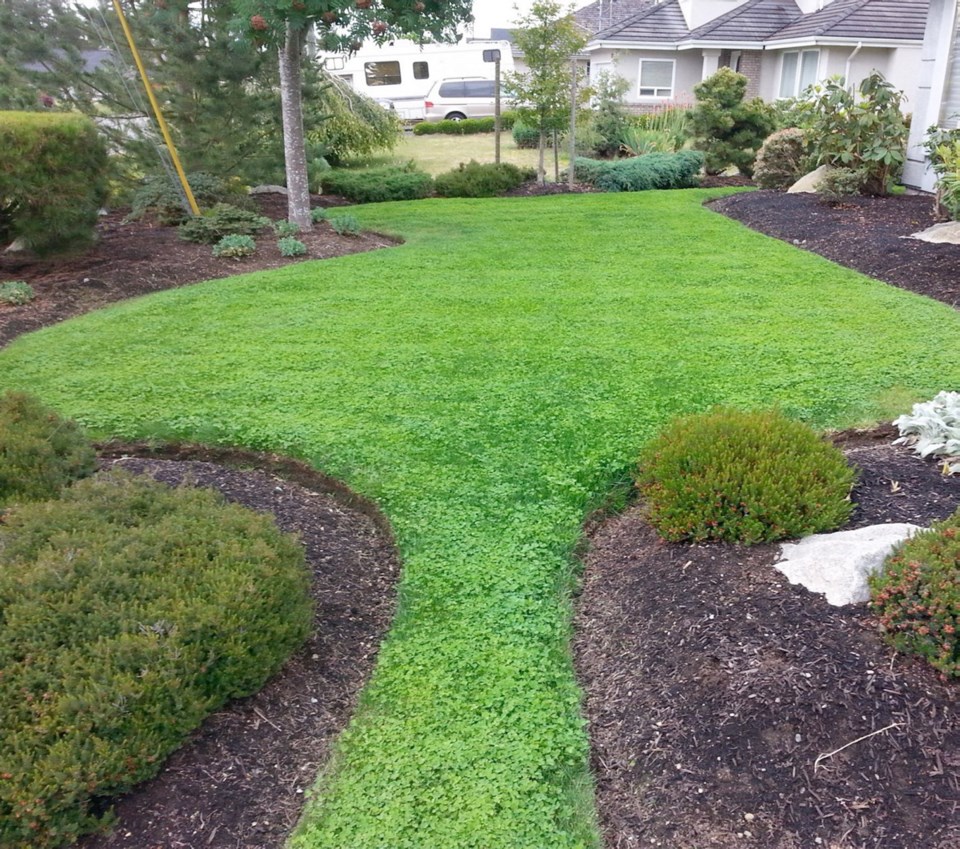Dear Helen: A while back, you wrote about a new kind of clover that is suitable as a lawn-grass replacement in our climate.
We are looking for something that is more environmentally friendly and less needy of water and fertilizer.
Would we have to replace the grass? What is the best timing for seeding the clover and would it attract deer?
V.C.
I am sorry to say that a section of my boulevard where an overseeding of micro-clover had produced a fine bed of greenery did attract daily visits from neighbourhood deer. I suspect the same would happen wherever local deer have free access to the clover.
Micro-clover grows lower, has smaller leaves, and produces fewer flowers than other clovers commonly seeded into lawns.
I’ve chosen to gradually overseed areas of established lawn with micro-clover. So far, I’ve had the best results overseeding in March, when rainfall is still plentiful and the soil is starting to lose its chill. September is another good time.
Overseeding has worked best when I’ve given the lawn a hard raking first, and raked topsoil over it before seeding, raking the seed in lightly and pressing it in. Use a rented roller for large areas and the flat of a hoe for limited spots. The seeds need to be in contact with soil to germinate and take root properly.
In this year’s catalogue, West Coast Seeds has a page of “lawn solutions” with information on replacing lawns with more sustainable options.
They note that even more information is available on their website: westcoastseeds.com.
New in the catalogue this year is a blend of micro-clover and Tall Fescue grass seed.
Among all the lawn-grass varieties, Tall Fescue is the least attractive to chafer beetles for egg laying. The clover fertilizes the grass naturally by fixing atmospheric nitrogen in nodes along its roots.
West Coast Seeds advises that seeding onto freshly prepared, bare ground gives best results with lawn alternatives. I opt to overseed onto established lawns because the thought of lifting up all the lawn and refreshing the soil makes me want to lie down and take a nap.
Dear Helen: In your last column of 2017, you wrote about a nearly indestructible house plant called mother-in-law’s tongue (snake plant, Sansevieria).
I’ve heard that these plants rarely bloom, but mine flowers regularly. Is this because the plant is root-bound? Should I break the plant up and move it into two pots?
S.B.
Under good growing conditions, a mature clump of the variety you have (Sansevieria trifasciata laurentii) will produce sprays of small, fragrant flowers. In one of my house-plant reference guides, there is a picture of a plant exactly like yours, with precisely the same kind of flower stalk.
These plants rarely need repotting. I’ve often come across the advice to repot only when growth begins to crack the pot.
Mature clumps can be unpotted and divided into sections for repotting individually. Offset leaf clusters can be cut away from the base and potted.
Dear Helen: As I was watering one of my house plants, I was shocked to see tiny, pale bugs scurrying about on the soil surface. What are they, and what should I do about them?
C.D.
The creatures could be either fungus gnat larvae or springtails.
Fungus gnat larvae are white maggots with dark heads. They feed mostly on decaying plant matter in the soil, but they also can injure the roots of young plants. The maggots hatch from eggs laid on the soil surface by the adult form — tiny, dark flies that hover around plants and rise up when the plants are disturbed.
You do not mention seeing small flies around the plant. Their presence would be confirmation that the maggots are fungus gnat larvae.
Springtails are very tiny, only up to half a centimetre, and usually pale in colour. They are commonly seen hopping or crawling about on the soil surface after watering. Their presence often indicates over-watering or/and an excess of decaying plant matter in the soil. As with fungus gnat larvae, springtails can damage seedlings and small plants.
In light infestations, the remedy is to cut back on watering. Let the soil surface dry between waterings.
Where high concentrations of the soil insects are present, unpot the plant, gently rinse the roots, and repot in a new, clean soil mix that freely drains excess moisture.



